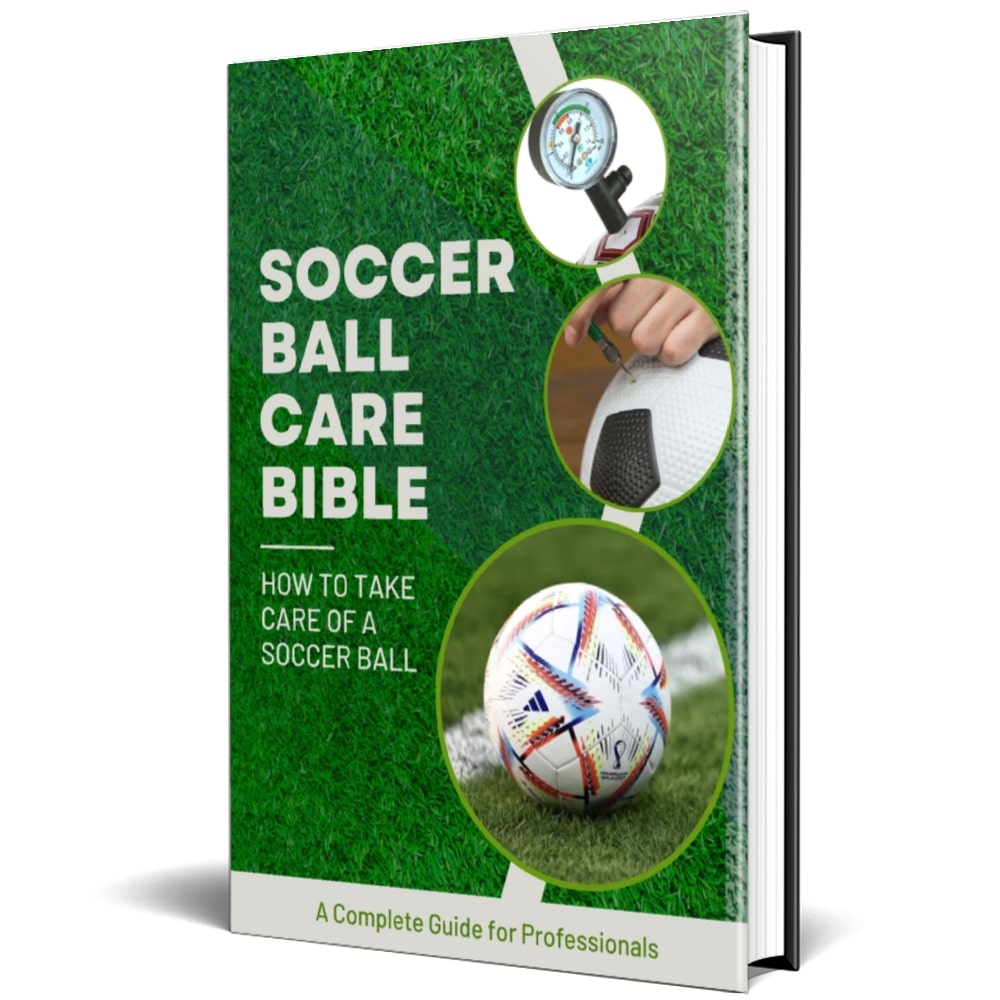A small part of soccer ball aftercare involves pumping them up after they’ve lost a fair bit of air pressure.
But there’s more to soccer ball inflation than meets the eye.
Many people gloss over quite a few intricate details when it comes to this topic, and it is this lack of attention that can easily shorten the lifespan of the soccer balls that we cherish so much.
So, I’ve decided to create a simple soccer ball inflation guide that details everything you need to follow and observe throughout the process.
Let’s cut right to the chase…
Steps for inflating a soccer ball
I can almost guarantee that if you follow the sequence that I’m about to outline, you’ll have no complaints.
There’s no greater feeling than being able to curve your soccer ball into the top corner of the goal, all whilst marvelling at its smooth flight trajectory.
So, here’s my list of actionable steps for inflating a soccer ball:
1. Locate your pump and needle
The first thing you need to do is grab yourself a soccer ball pump and a needle!
Without these two necessary components, you can kiss your fully pressurised ball goodbye!
Now, pumps are easy enough to find at physical retail outlets and there’s usually no shortage of online store supply either.
As you’ll want to invest in a pump that you can rely upon for many years to come, don’t be afraid to whip out the cheque book.

Want to test your knowledge on soccer ball care?
Take the quiz by clicking the button below and see just how informed you truly are!
Note - You'll need to enter your email address to see the final results.

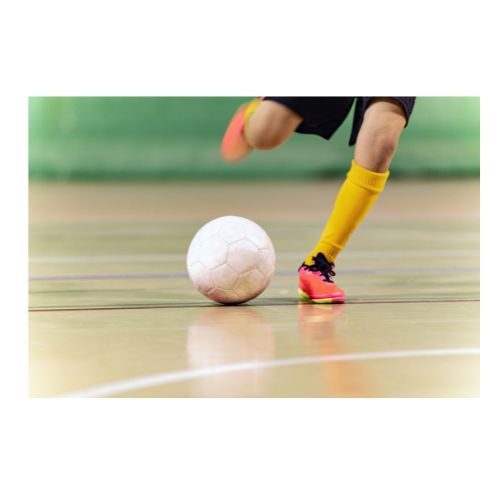




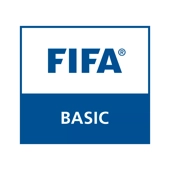

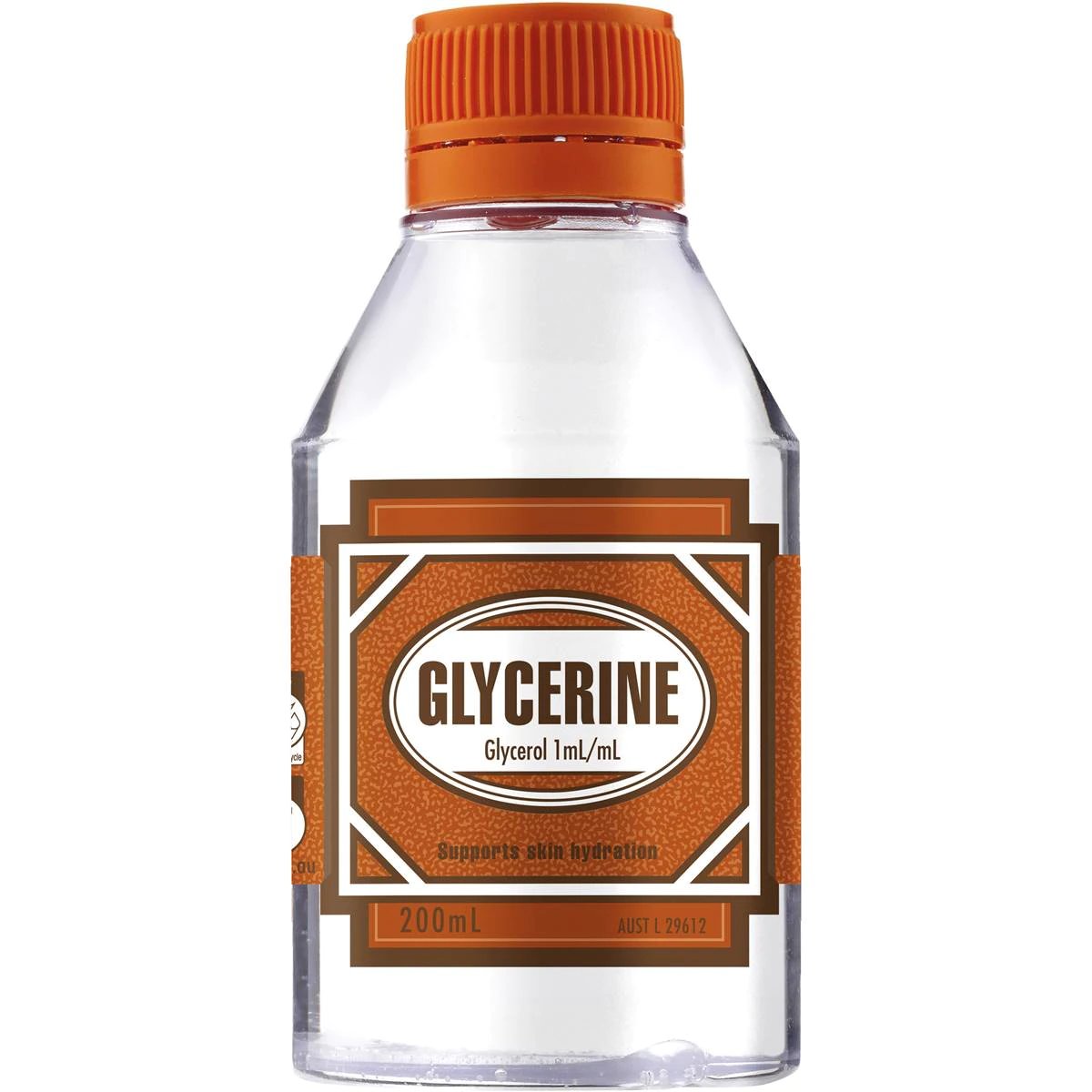

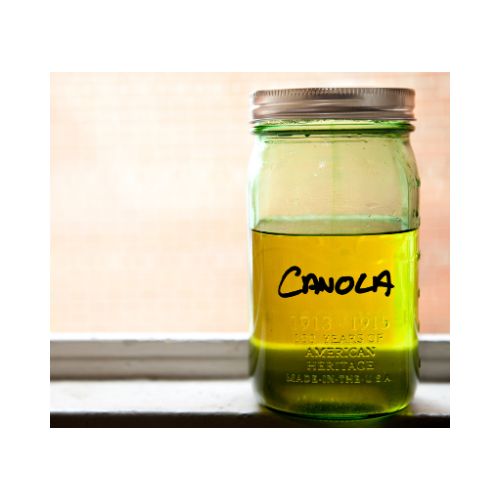






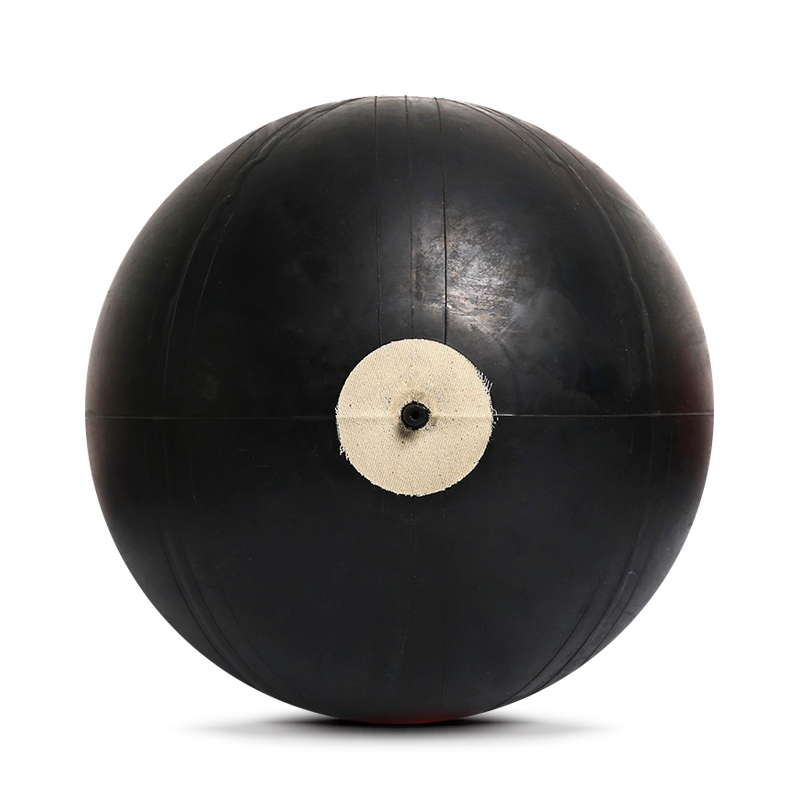
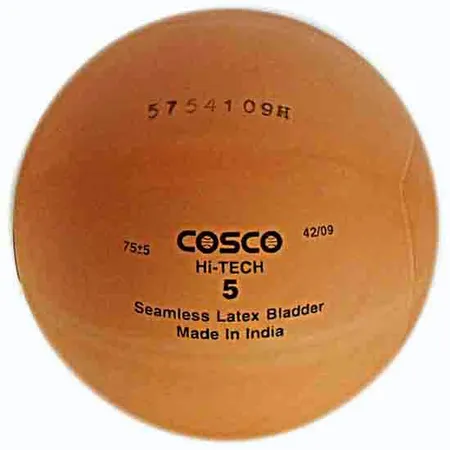





Sometimes, products that are cheap and affordable can end up being expensive to maintain in the long run if they break down or get faulty often.
I’d suggest spending money on a pump that comes with an air pressure gauge attached to it, as well as an accompanying set of needles.
Technology has made such big strides that it’s even possible to purchase an electric soccer ball pump – be it a mains powered or rechargeable one.
Ultimately, the choice here is yours.
2. Determine the correct air pressure level
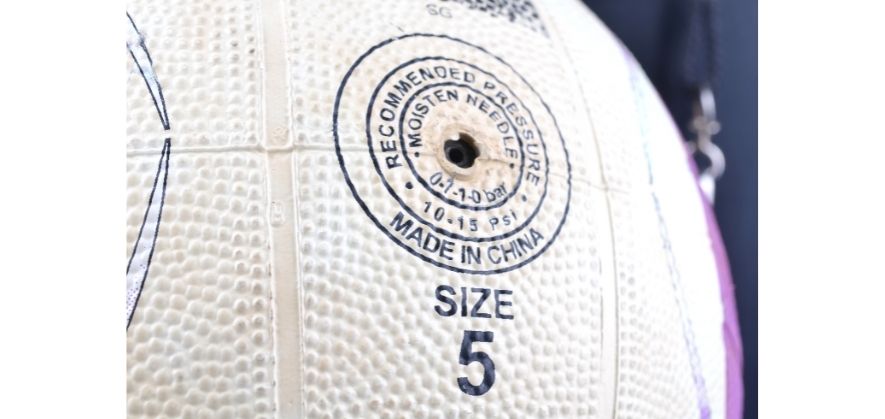
The reason for soccer balls needing to be inflated to the correct air pressure level is two-fold.
Firstly, over-inflation can damage the structural integrity of the ball by ruining the spherical shape.
And conversely, under-inflation negatively impacts important ball performance factors like aerodynamics and bounce uniformity.
Which is why you need to read the soccer ball manufacturer’s instruction manual to find out exactly how much air pressure is needed for optimal inflation.
In my soccer ball pressure guide, I stated that air pressure is measured in PSI or bar units and that a typical size 5 ball should have between 8.5 PSI to 15.6 PSI of air.
I’d highly encourage you to have a read of that article as there’s so many useful nuggets of information packed in.
You can’t go wrong with the manufacturer’s air pressure specification or the aforementioned pressure range.
3. Lubricate the needle and valve before insertion
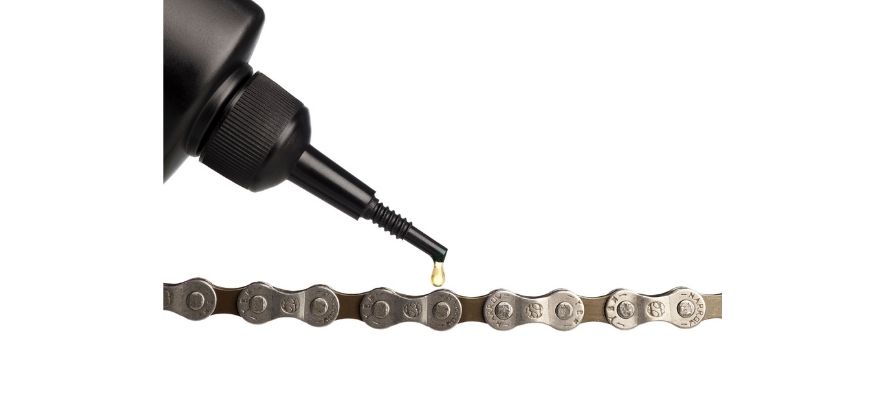
Here we have another highly important step.
You see, lubrication of these two components ensures the smooth entry and exit of the needle itself, as well as helping to prevent any internal bladder piercings and surface tears at the valve opening.
Silicone or glycerine oil can be used sparingly for this step.
What you need to do is place a few drops in and around the valve area along with wetting the needle too.
4. Connect the needle with the pump
Alright, with that delicate step out of the way you’re more than half of the way towards having a fully pressurised soccer ball.
Next up is attaching the pump to the back side of the needle (i.e. the part with the connector).
Once the needle is firmly latched onto the pump, you can insert the needle tip into the lubricated valve.
5. Grab the pump handle and begin inflating

Using either one or (preferably) both your hands, hold onto the pump handle and push downwards.
Then lift the handle up again slightly and repeat.
This push and pull motion is what initiates the flow of air into the soccer ball.
After a few pumps, you’ll begin to see the fruits of your efforts as the ball will gradually inflate to its round shape.
However, you need to take particular care here not to damage the seams of the ball by pumping too quickly or through over-inflating it.
6. Stop pumping once the desired air pressure level is met
If you bought yourself a pump with a built-in pressure gauge, now is the time to make use of it.
Take stock of how much air you’ve filled the soccer ball up with by noting the position of the dial pointer on the scale or reading the numbers in the case of a digital gauge.
If the level matches up with the pressure figure provided by the manufacturer, then you can stop pumping.
Slowly remove the needle from the valve, after which you’re good to go!
On the other hand, if you don’t have a pressure gauge with you then you’ll need to take the needle out once you feel that the soccer ball is firm enough.
Video demonstration
Humans are visual beings in some respects.
Which is why I thought that it would be a good idea to show the exact soccer ball pumping sequence in a short video.
Take a look at the clip below and see how well you can replicate the process:
Further soccer ball inflation questions
And that’s essentially it!
If you’re able to follow the procedure that I’ve outlined, you should have no problems pumping up any soccer ball.
At this juncture I’d like to answer a couple of additional questions that pertain to this topic.
So, here goes…
Can you inflate a soccer ball with a bike pump?
Yes, you can use a bicycle pump to inflate a soccer ball even though its use case is not built with it in mind.
This is because bicycle pumps still follow the basic principle of providing air pressure.
So, it doesn’t matter what sort of object is being inflated as long as it has an opening where the air can be easily inserted into.
But just to clarify, if you intend to use a bicycle pump to inflate your soccer ball, you will need to make sure you source a needle and lubricate both that needle and the valve opening before you begin pumping.
Why should the needle be moistened before inflating?
A lot of people make the costly mistake of forgetting to lubricate the needle and the valve opening before commencing the pumping process.
You can get away with this in some cases, but there is a chance of damaging parts of the ball by failing to lubricate both components.
The valve opening is very delicate and the needle has a small enough surface area that is capable of piercing the inner bladder that holds all the air.
Without silicone or glycerine lubricators, abrasions may be caused due to the friction that’s brought about by needle entry and exit.
Such abrasions can tear the valve lining or rupture the inner bladder which would prevent the ball from inflating as any air added would immediately seep out.
How do you inflate a soccer ball without a pump or needle?
There are many ways to inflate a soccer ball without a pump, and I’m going to list a few of them:
Using a compressed air cannister
The struggle to inflate a soccer ball without a pump or needle is mainly brought about by the difficulty of finding an object that:
- Is small enough to fit into the air hole
- Can facilitate the uninterrupted transportation of air into the ball
Well air cannisters tick both of these boxes, as they usually come packaged with a small straw that is compact enough to fit into a soccer ball’s valve opening.
However, success with this method is likely to vary.
It’s certainly much harder to fill up a completely deflated ball with an air cannister when compared with a ball that just needs an extra burst of pressure.
Visit a petrol station for a refill
Another viable alternative involves taking a trip to the petrol station.
These facilities usually have air pumps that are used to inflate car tires, so if you have a pump needle to hand it’s quite straightforward to inflate your soccer ball as the process is the same.
One interesting thing I discovered is that a Californian law implemented from 1999 requires all gas stations within the state to provide water, compressed air and pressure gauge services free of charge to any customer who purchases fuel.
If you’re an American vehicle owner reading this, make the most of your next fuel refill!
Using a pen tube as a makeshift needle
One last option is to get a stand in replacement for the needle.
Grab a pen nearby, along with a paper clip, a pair of scissors and some tape.
The process is a bit too convoluted for me to explain so I’ll refer you to this website which outlines all the steps for the process.
From what I managed to decipher; you’re supposed to do the following:
- Take the pen apart piece by piece
- Drain all the ink from it
- Cut a piece out of the ink tube and insert it within the writing cap
- Create the ball tube from the metal paper clip
- Place the writing cap “needle” into the ball after connecting it to the pump
Conclusion
So, there you have it!
If you’ve taken your time to read the entire article you should have a great grasp of how to pump up a soccer ball.
For those of you struggling to decide on your soccer ball choice, take a look at my product roundup article on the best soccer ball options.
And if you’re looking for a guide on how to deflate your soccer ball as opposed to inflating it, then check out that hyperlink.
Finally, before you go, you should check out our eBook on Soccer Ball Care.
Within this monster of a resource, we tackle all there is to know about looking after a soccer ball and maximising its useful life right from when you purchase this type of product.
This eBook covers a plethora of different topics, such as:
- soccer ball construction;
- inflation and pressure management;
- cleaning and maintenance;
- soccer ball storage; and
- how to extend the useful life of your ball
In just a couple of hours, you’ll have more knowledge on what is good and bad for your soccer ball than you could ever fathom!
You’ll learn how to inflate your soccer ball to the correct level of air pressure based on the size of ball you have, as well as know how to clean and store your soccer ball properly after games.
But I don’t think there’s anything better than being able to effectively troubleshoot problems with your soccer ball and fix them yourself!
So, you can finally take care of your soccer ball for many months to come, which without a doubt will save you time and money as won’t be searching for and buying a replacement any time soon.
With just one click…
Grab yourself a copy right now for only $29!
If you enjoy the content that I create and would like to buy me a coffee, then I’d really appreciate it!
Any money that I earn through this donation will be re-invested into more content for this website.
Additionally, by sending in a donation you’ll also receive a copy of my recently released 190+ page eBook on Soccer Ball Care, as well as be subscribed to our mailing list where you’ll be regularly informed on the latest developments concerning the Soccer Whizz blog.
- Future Icons: Europe’s Emerging Midfield Maestros Set for Glory - December 4, 2023
- Kickstarting a Revolution: How Soccer Transformed the United States Over the Last Four Years - October 7, 2023
- 4-1-4-1 Soccer Formation [Analysis] - September 23, 2023

